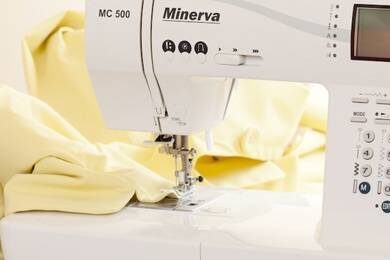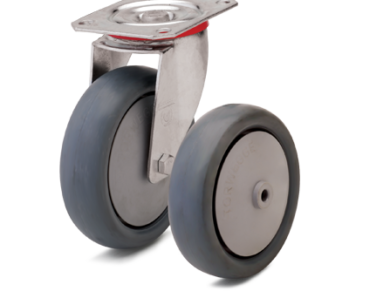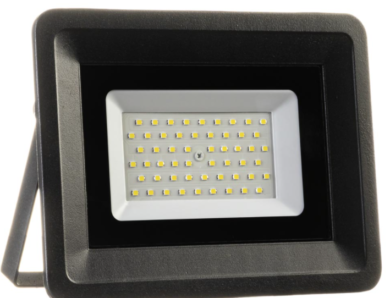Why do the brushes in the vacuum cleaner spark: causes and solutions to the problem
A small spark between the brushes and the collector is a normal phenomenon. Quite another matter, if the first ones directly "spew" sparks. Increased sparking of the brushes in the electric motor of the vacuum cleaner, indicates a malfunction, which can significantly shorten the service life of the device. The phenomenon may be accompanied by a loss of engine power, irregularity of work, overheating and other factors. About that, why do vacuum cleaner brushes spark? , and what can be done, we will tell in this publication.
Brush wear
The most simple and obvious cause of sparks is the wear of the brushes. Though, that collector engines are equipped with special spark-suppressing capacitors, which, in addition to the function of increasing the service life of these elements, also reduce radio interference, over time, the brushes wear out and need to be replaced.
Brushes are an element of an electric motor, provides contact between fixed and moving electrodes.
To replace the brushes, you first need to get to the electric motor. To do this, you will have to disassemble the vacuum cleaner. In most cases, it is quite simple to do it with a screwdriver, but do not forget to disconnect the device from the network. After disassembling the vacuum cleaner and providing convenient access to the engine, we find brush holders. Depending on the design, to remove the brushes from the brush holder, it is usually necessary to pull back the latches, this may require a screwdriver.
Read also: do-it-yourself vacuum cleaner engine disassembly.
In recent years, many manufacturers have supplied their vacuum cleaners with a set of spare brushes. But if you had to buy a device without additional spare parts, then they can be purchased in stores, where power tools are sold.
When buying new brushes, you need to pay attention to their size and material.
There are graphite and copper-graphite brushes. Will be better, if you remove the old elements from the electric motor of your vacuum cleaner in advance and go to the store with them, in order not to make a mistake in the choice.
Bad contact
In most cases, the brushes spark when there is poor contact with the collector. It happens, if you installed new ones. For tighter fit of the brushes to the collector, you can use a "skin" zero, or just let the vacuum cleaner work at medium speed for approx 20 minutes. Be sure to check the condition of the bearings, as their wear can cause knocking and uneven rotation of the rotor. In the same way, the protrusions of the insulation between the plates of the collector manifest themselves, scratches on the surface, various inequalities. Abrasive paper is used for polishing.
The device of the collector electric motor of the vacuum cleaner
Brushes should not hang in the brush holder, but have free movement, which provides them with a spring, the state of which also plays an important role.
If you decide to replace the brushes, be sure to pay attention to that, how tightly the spring presses them to the collector. Sometimes, in order for the brushes to be more tightly pressed, it is enough to stretch the spring a little.
Angle of inclination
At the wrong angle of inclination of the brushes relative to the stator, sparking is also possible. The correct position is when both brushes are strictly on the same line, which passes through the axis of rotation of the collector. Over time from constant vibration, the attachment of the brush holder may loosen or even be mechanically damaged. Carefully examine the surfaces of the nodes. Details, that have cracks, chips or traces of corrosion, subject to replacement.
Each manufacturer introduces design features into its product line, and therefore different types of vacuum cleaners have different types of brush attachment. However, in general, all models have the same device, and a brush holder as a rule, fastened with two screws and allows adjustment.
Pollution
The surface of the collector at the point of contact with the brushes must be clean. Coal or metal dust can have a detrimental effect on the contact, which is formed when the brushes rub against the rings or the collector. Contamination of the latter causes sparking, from which soot is formed. Self-repair of the vacuum cleaner in this case involves ordinary cleaning. If the surface has traces of contamination, it is necessary to get rid of them with the help of a fine skin, and then skim, after wiping with alcohol or gasoline. You should also pay attention to the space between the contacts on the rotor. If they are clogged with dirt or graphite dust, they should also be cleaned and degreased.
Locking
The most unpleasant, what can happen to a vacuum cleaner motor is an interturn short in the winding. Usually, sparking in this case occurs in a circle, the engine speed drops, possible blows, collector plates have significant blackening. In this situation, you are at risk of replacing the entire motor, T. To. the cost of the anchor can be 70-80% from the cost of the entire electric motor, and rewinding in domestic conditions is not an easy task.
Conclusion
Main malfunctions, which can lead to sparking in the vacuum cleaner are the following:
- various mechanical damages, scratches;
- soot on the surface of the clamp;
- soldering defects and poor contact of elements;
- skew of the ring;
- cracks in the traverse;
- wear and deformation of contacting elements;
- spring wear or breakage.
Read also: why does the vacuum cleaner not turn on?.
Worn brush holders must be repaired or replaced. These are the elements of an electric motor, like brushes, must be provided with regular care, which consists in observing the contact surface, maintaining its cleanliness and the required nominal area of contact with the collector or rings.
in addition, it is necessary to monitor that, so that the pressure on the rotor is uniform, because otherwise the brushes wear unevenly. Over time, the brushes wear out and must be replaced in a timely manner to prevent sparking, which can lead to the formation of soot and other more serious breakdowns of the electric motor.




